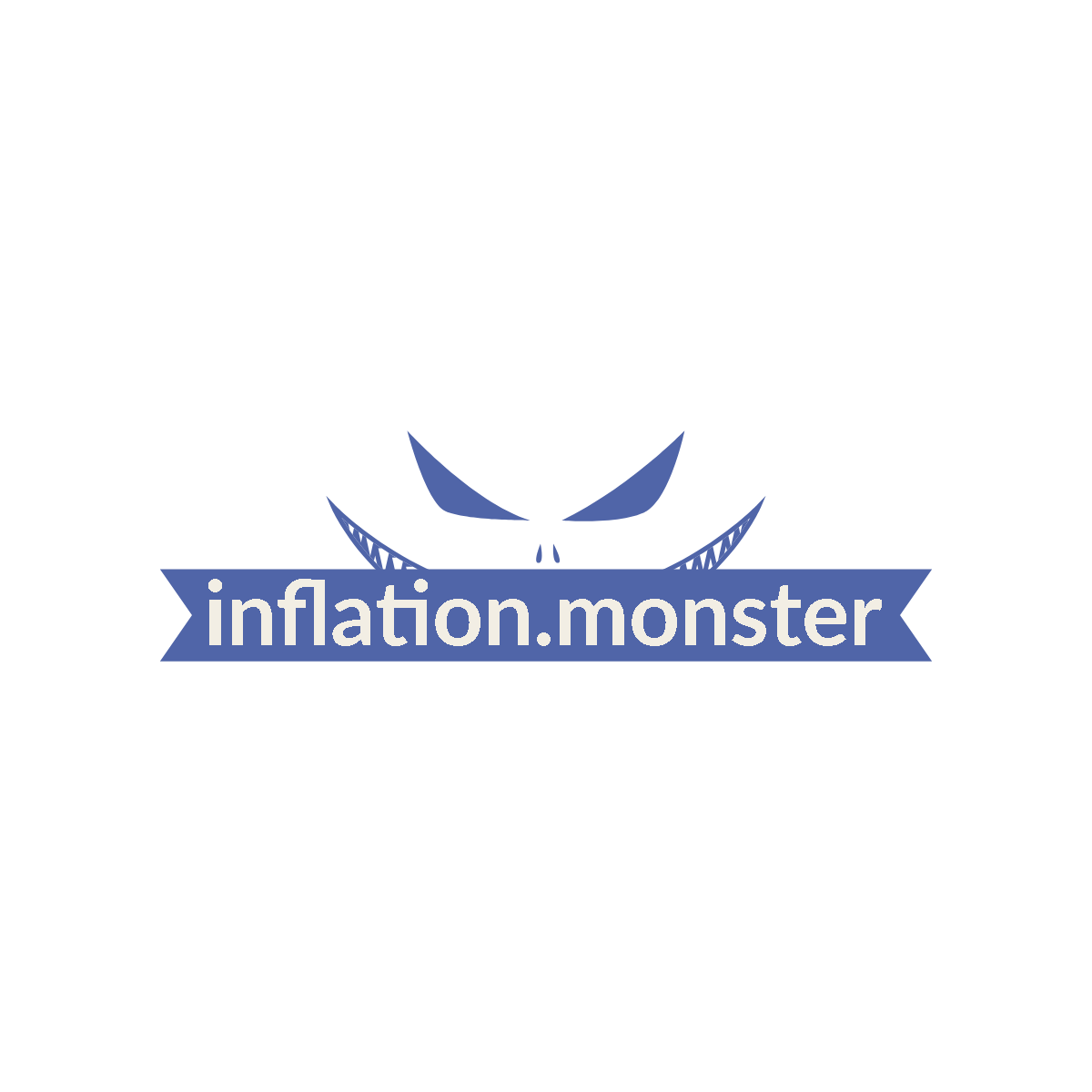Have you ever wondered how inflation affects the aerospace industry? We here at Inflation.Monster are dedicated to providing you with valuable insights into the intricate relationship between inflation and the economics of aerospace. As the cost of goods and services continues to rise over time, it’s crucial to understand how this phenomenon impacts not only the everyday consumer but also industries as dynamic as aerospace. Join us as we explore the fascinating world where the inflation monster collides with the aerospace industry, uncovering the hidden forces that shape our skies. Let’s embark on this journey together and unravel the mysteries behind inflation’s impact on aerospace economics.

Aerospace Overview
When it comes to the vast expanse of the aerospace industry, a comprehensive understanding is key. So, let’s start by defining what exactly the aerospace industry entails. Simply put, aerospace refers to the combined activities of research, development, and manufacturing in the field of aviation and space exploration. It encompasses both commercial and military sectors, including the production of aircraft, spacecraft, satellites, and related components.
The importance of the aerospace industry cannot be overstated. It plays a vital role in technological advancements, national defense, global connectivity, and economic growth. Aerospace technologies, such as aviation and space exploration, have greatly impacted various sectors, including transportation, communication, and scientific research. Moreover, the industry provides employment opportunities and drives innovation, making it a crucial player in economies around the world.
Speaking of key players, several companies stand out in the aerospace industry. These industry giants have consistently pushed boundaries and led the way in technological advancements. Companies like Boeing and Airbus dominate the commercial aircraft manufacturing sector, while SpaceX and NASA have revolutionized space exploration. These key players, along with numerous other companies and organizations, drive the growth and development of the aerospace industry.
Types of Inflation
Before diving into the relationship between inflation and the aerospace industry, it is important to understand what inflation is and the different types it can take. Inflation refers to the sustained increase in the general price level of goods and services over a period of time. It erodes the purchasing power of money and has significant implications for economic stability.
Inflation can manifest in various types, each characterized by different underlying causes. Demand-pull inflation occurs when the demand for goods and services exceeds the supply, leading to an increase in prices. On the other hand, cost-push inflation occurs when the costs of production, such as wages or raw materials, rise and are passed on to consumers.
Another type of inflation is called built-in inflation, which occurs when expectations of future price increases lead to higher wages and prices in the present. Lastly, there is hyperinflation, which represents an extreme and rapid increase in prices, often caused by a collapse in the value of a country’s currency.
The economic impact of inflation is far-reaching and complex. While moderate inflation can be a sign of a healthy economy, high or unpredictable inflation can be detrimental. It reduces the purchasing power of consumers, erodes the value of savings, distorts price signals, and creates uncertainty. Additionally, high inflation can lead to social unrest and hinder long-term economic growth.

Inflation and Aerospace Industry
Now that we have a grasp on inflation and its various types, let’s explore its relationship with the aerospace industry. Like many industries, the aerospace sector is not immune to the effects of inflation. Fluctuations in prices and purchasing power can have a significant impact on aerospace companies and their operations.
Several factors influence inflation in the aerospace industry. Firstly, the cost of raw materials, such as aluminum and composite materials, can directly affect the manufacturing costs of aircraft and spacecraft. Inflation in these materials can drive up production expenses, leading to higher prices for the end products.
Moreover, labor costs play a crucial role in the aerospace industry, and inflation directly affects wages and salaries. As labor costs increase due to inflation, the overall manufacturing costs of aerospace products rise. This can put pressure on companies to adjust their pricing strategies to maintain profitability.
The impact of inflation on aerospace companies is substantial. When inflation rises, companies may face increased costs for production, maintenance, and research and development. This can strain their financial resources and hinder their ability to invest in technological advancements or expand operations. Moreover, aerospace companies may be forced to increase prices to maintain profitability, which can impact their competitiveness in the market.
Costs and Pricing
One significant aspect of the aerospace industry is the cost of manufacturing aircraft and components. Aerospace manufacturing costs are influenced by various factors, including raw material prices, labor costs, research and development expenses, and regulatory requirements.
As mentioned earlier, raw material prices, such as aluminum and composite materials, can be subject to inflationary pressures. Fluctuations in these prices directly impact the overall production costs of aircraft and spacecraft. Additionally, labor costs, including wages and salaries, are a significant component of manufacturing expenses. Inflation can lead to higher labor costs, further increasing the overall manufacturing costs for aerospace companies.
In response to inflation, aerospace companies must consider their pricing strategies. They need to account for increased production costs and maintain profitability. While raising prices is one option, it can also impact the demand for their products. Pricing strategies must strike a balance between profitability and market competitiveness.
Inflation also affects aircraft pricing and the affordability of air travel. As the costs of production rise due to inflation, aircraft manufacturers may pass on these increased expenses to airlines and, subsequently, to passengers. This can result in higher ticket prices, making air travel less accessible for some consumers.

Government Policies and Inflation
The role of the government in controlling inflation is crucial. Governments implement various policies to manage inflationary pressures and maintain economic stability. These policies can significantly impact the aerospace industry, which relies heavily on government contracts, regulations, and funding.
Government policies can directly affect the aerospace industry in several ways. For instance, fiscal policies, such as taxation and government spending, influence the overall demand and supply dynamics of the economy. Adjustments in taxation or government spending can impact the purchasing power of individuals and businesses, potentially affecting the demand for aerospace products and services.
Additionally, monetary policies, implemented by central banks, can influence inflation. Central banks control interest rates and money supply to manage inflationary pressures. Adjustments in interest rates can impact borrowing costs for aerospace companies, affecting their ability to invest in new technologies or expand operations.
Another important aspect is defense spending. Governments allocate a significant portion of their budgets to defense, which includes funding for aerospace technologies and military aircraft. Inflation can affect defense spending by squeezing the overall budget and limiting available funds for investment in the aerospace industry.
Technological Advancements
Technological advancements have always been at the forefront of the aerospace industry. From the invention of the airplane to the exploration of outer space, innovations continuously shape the trajectory of the industry. However, these advancements are not immune to the influence of inflation.
Technological advancements often require substantial research and development (R&D) investments. Inflation can impact the affordability of these investments, particularly when it leads to increased costs for materials, labor, and equipment. Higher inflation can strain the financial resources of aerospace companies and limit their ability to allocate funds towards R&D.
Furthermore, inflation can also influence the direction of technological advancements in the aerospace industry. Companies may prioritize cost-cutting measures in times of high inflation, compromising long-term technological progress. Inflation can also disrupt supply chains and increase volatility in the market, further impacting the pace and direction of technological advancements.
Despite these challenges, technological advancements can act as a tool to mitigate the impact of inflation. Innovations that improve operational efficiency, reduce production costs, or enhance aircraft performance can help companies navigate inflationary pressures. Investing in research and development remains crucial in driving technological advancements, even in the face of inflation.
Globalization and Inflation
Globalization has transformed the aerospace industry, enabling cross-border collaboration and expanding market reach. However, like other industries, the aerospace sector is not immune to the effects of inflation arising from globalization.
Globalization can impact inflation in several ways. The increased interconnectedness of economies and the liberalization of trade can lead to the spread of inflationary pressures. Fluctuations in exchange rates, for example, can affect the pricing of imported materials, impacting the overall manufacturing costs for aerospace companies.
Moreover, international supply chains play a crucial role in the aerospace industry. Companies often source materials and components from various countries, taking advantage of cost efficiencies and specialized expertise. However, inflation in one country can disrupt supply chains and increase costs, impacting the overall competitiveness of aerospace companies.
Exchange rates are also an important factor to consider. Currency fluctuations can impact the cost of imported materials, exports, and overall profitability. Exchange rate volatility, often influenced by inflationary pressures, poses challenges for aerospace companies operating in multiple countries.
Market Competition
Competition within the aerospace industry is fierce, with companies vying for market share and contracts. Inflation can significantly impact market competition and reshape the industry landscape.
Price competition is a critical aspect of market competition within the aerospace industry. Companies strive to offer competitive pricing for their products and services while maintaining profitability. However, inflation can increase manufacturing costs, putting pressure on pricing strategies. Aerospace companies must navigate this delicate balance to remain competitive in the market.
Furthermore, inflation can impact market share within the aerospace industry. Companies that can manage inflationary pressures effectively, control costs, and adapt to changing market dynamics may gain a competitive advantage. On the other hand, companies that struggle to adjust to inflationary pressures may lose market share to more agile competitors.
Inflation and Workforce
Labor costs are a significant component of manufacturing expenses in the aerospace industry. Inflation can directly impact wages and salaries, leading to increased labor costs for aerospace companies.
When inflation rises, the cost of living also increases. As a result, workers often demand higher wages to maintain their purchasing power. This can increase labor costs for aerospace companies, impacting their overall operational expenses.
Moreover, inflation can impact the job market within the aerospace industry. As manufacturing costs rise due to inflation, companies may need to adjust their workforce to maintain profitability. This can lead to lay-offs, reduced hiring, or even the closure of some operations. Inflation can create uncertainty in the job market, affecting both employees and job seekers within the industry.
To mitigate the impact of inflation on the workforce, some aerospace companies adjust wages for inflation. By providing wage increases that keep pace with inflation, companies aim to maintain the purchasing power of their employees and incentivize productivity. However, this approach may vary depending on the company’s financial health and competitive position.
Inflation Hedge in Aerospace
The aerospace industry has often been considered an inflation hedge, meaning that it has the potential to perform well in times of inflation. There are several factors that contribute to aerospace’s role as an inflation hedge.
Firstly, aerospace companies often have long-term contracts and backlog orders. These contracts generally have provisions that allow for adjustments in prices based on inflation. As inflation rises, aerospace companies can benefit from price increases, ensuring that their revenues keep pace with inflationary pressures.
Additionally, the aerospace industry is highly regulated and subject to stringent safety and certification standards. These regulatory barriers can limit new entrants and competition within the industry. In times of inflation, barriers to entry become even more significant, protecting established aerospace companies from potential competition.
Moreover, aerospace products have a relatively inelastic demand, particularly in the defense sector. Inelastic demand means that even as prices increase due to inflation, demand for aerospace products remains relatively stable. This stability in demand can contribute to the industry’s resilience in times of inflation.
Investing in the aerospace sector during inflation is a strategy that some investors consider. The industry offers opportunities for long-term investment, particularly in companies with strong track records, technological advancements, and government contracts. However, like any investment, careful analysis and consideration of the broader economic climate is essential.
Finally, within the aerospace industry, certain sectors are more resistant to inflation than others. Defense and military aerospace companies, for example, may be better positioned to navigate inflationary pressures due to steady government contracts and stable demand. On the other hand, commercial aerospace companies may face greater challenges due to the impact of inflation on consumer purchasing power.
In conclusion, the aerospace industry is not immune to the effects of inflation. Fluctuations in prices and purchasing power can significantly impact aerospace companies and the overall industry. Factors such as manufacturing costs, pricing strategies, government policies, and technological advancements all play a role in shaping the relationship between inflation and the aerospace industry. Understanding and effectively navigating these dynamics is crucial for aerospace companies to thrive in an ever-changing economic landscape.




